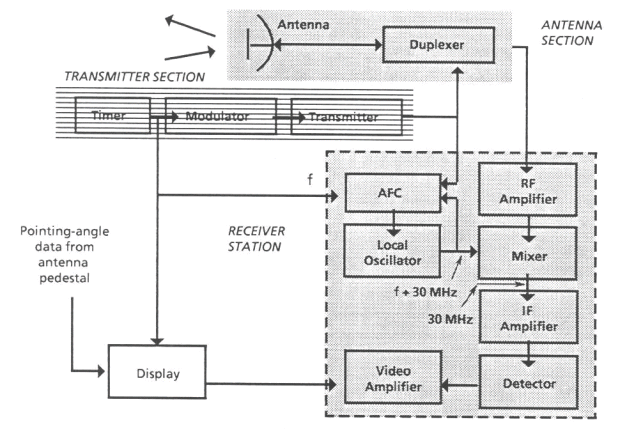Radar Components

A basic setup of a weather radar with the antenna, radome and electronics
The animation below shows how the different components of a weather radar work together.
A simplified diagram of an operational weather radar and the path of the signal from one component to the other
-
The electromagnetic radar signal is transmitted in pulses and generated by the transmitter.
-
It then moves to the Transmitter/Receiver switch which directs the radar pulse onto the antenna. The switch only allows one direction of traffic onto the antenna which operates as both a transmitting and a receiving instrument.
-
The antenna sends the radar pulse on to the atmosphere and receives the backscattered energy.
-
The weak scattered electromagnetic pulse is then forwarded back onto the T/R Switch.
-
The signal is transmitted from the switch to the receiver which processes the signal into a format suitable to be displayed at the display unit.
In its most basic form a pulsed weather radar consists of a transmitter, which produces power at the radar frequency, a transmit/receive switch, which connects the transmitter and receiver to the antenna during transmit and receive phases of operation, an antenna, which radiates the power and intercepts the reflected signals, a receiver, which detects, amplifies and transforms the received signals into video format and a display system on which the received signals is displayed. A block diagram illustrating this basic structure is shown in the above animation.
This same basic structure is illustrated in slightly more detail in the figure below. Although more detailed the various blocks can be grouped into transmitter, antenna, receiver and display section as shown.

Basic structure of a weather radar